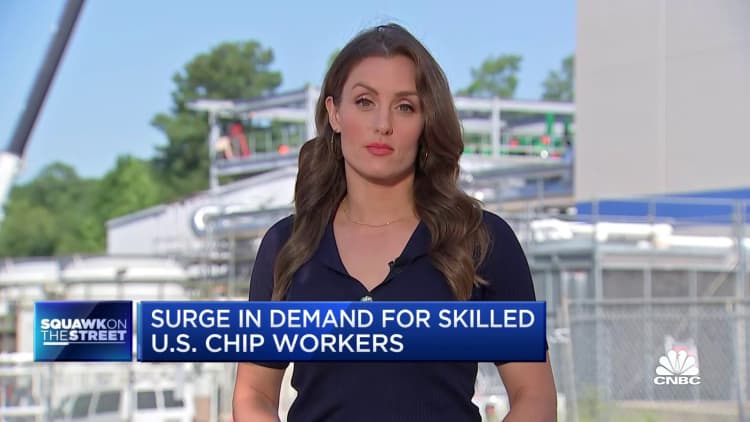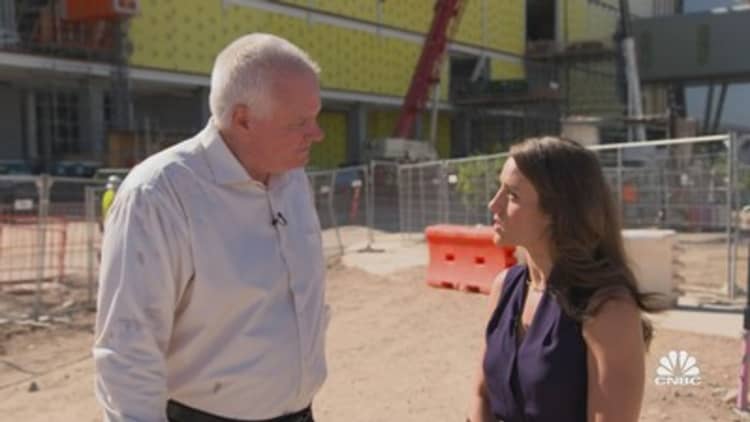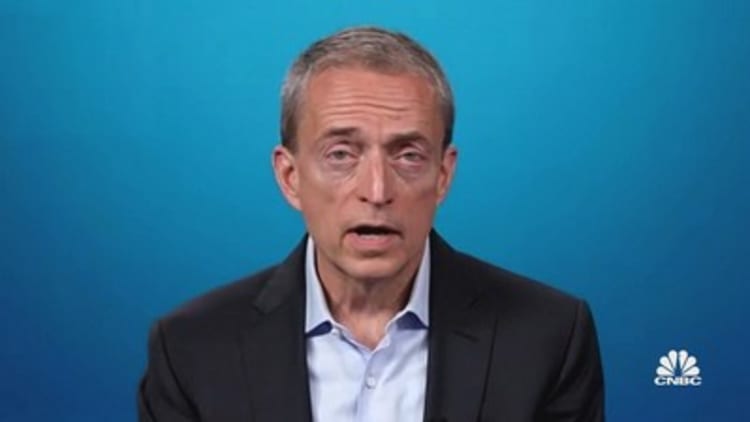
A surge in private funding for semiconductor manufacturing in the U.S. has sparked concerns about the availability of skilled workers.
One year ago, President Joe Biden signed the CHIPS and Science Act into law, prompting semiconductor companies to commit $231 billion towards building chip manufacturing hubs in the United States. However, as construction begins, companies are facing difficulties in finding qualified talent.
Taiwan Semiconductor Manufacturing Company (TSMC), the world’s largest contract chipmaker, has been forced to delay production at its $40 billion Arizona plant due to a shortage of U.S. workers.
“We’re still struggling to find qualified skilled tradespeople,” said TSMC Arizona President Brian Harrison. “We are installing highly advanced equipment that is unique to the United States.”
TSMC is currently bringing workers from Taiwan to handle the advanced equipment and train U.S. workers.
“U.S. workers simply do not have experience with these specific tools and techniques,” Harrison explained.

However, not everyone is supportive of TSMC’s approach. The Arizona Pipe Trades 469 union has funded a website called “Stand with American Workers,” accusing TSMC of prioritizing Taiwanese workers over local workers in an attempt to exploit cheap labor.
Harrison argued that this is a misconception: “In fact, it is more expensive to bring workers from Taiwan, provide them with fair salaries in the U.S., and cover their relocation, housing, and support.”
Due to the majority of the semiconductor supply chain being based overseas, there is a limited pool of qualified workers available in the U.S.
According to a study by Oxford Economics and the Semiconductor Industry Association, the chip industry in the U.S. is expected to create nearly 115,000 jobs by 2030. However, 67,000 of those jobs for technicians, computer scientists, and engineers are at risk of remaining unfilled due to a lack of educational training programs and school funding.
Microchip and flag of United States displayed on a phone screen are seen in this multiple exposure illustration photo taken in Krakow, Poland on April 12, 2023. (Photo by Jakub Porzycki/NurPhoto via Getty Images)
Jakup Porzycki | Nurphoto | Getty Images
Intel CEO Pat Gelsinger acknowledged that the industry’s workforce could be better-skilled but placed some of the blame on TSMC for managing these challenges.
“I think TSMC lacks experience in operating on a global scale. Samsung, on the other hand, has not complained as they build in the U.S., but they are a truly global company,” said Gelsinger.
“Having said that, we do recognize that skilled labor, both in construction and for our fabrication facilities, is an area that requires improvement,” he added.

Since the passage of the CHIPS Act, over 50 community colleges have announced new or expanded semiconductor workforce programs.
According to student job posting website Handshake, applications for full-time jobs at semiconductor firms increased by 79% in the 2022-2023 academic year, compared to a 19% increase in other industries. Many chip companies are also investing heavily in developing their own talent pipelines through partnerships with local schools and universities.
For example, semiconductor manufacturer GlobalFoundries has collaborations with the Georgia Institute of Technology and Purdue University for semiconductor research and education.
However, CEO Tom Caulfield believes there is still more work to be done.
“I anticipate significant pressure on the industry as we aim to double our manufacturing capacity in the U.S. over the next decade,” he said.
Denial of responsibility! VigourTimes is an automatic aggregator of Global media. In each content, the hyperlink to the primary source is specified. All trademarks belong to their rightful owners, and all materials to their authors. For any complaint, please reach us at – [email protected]. We will take necessary action within 24 hours.


